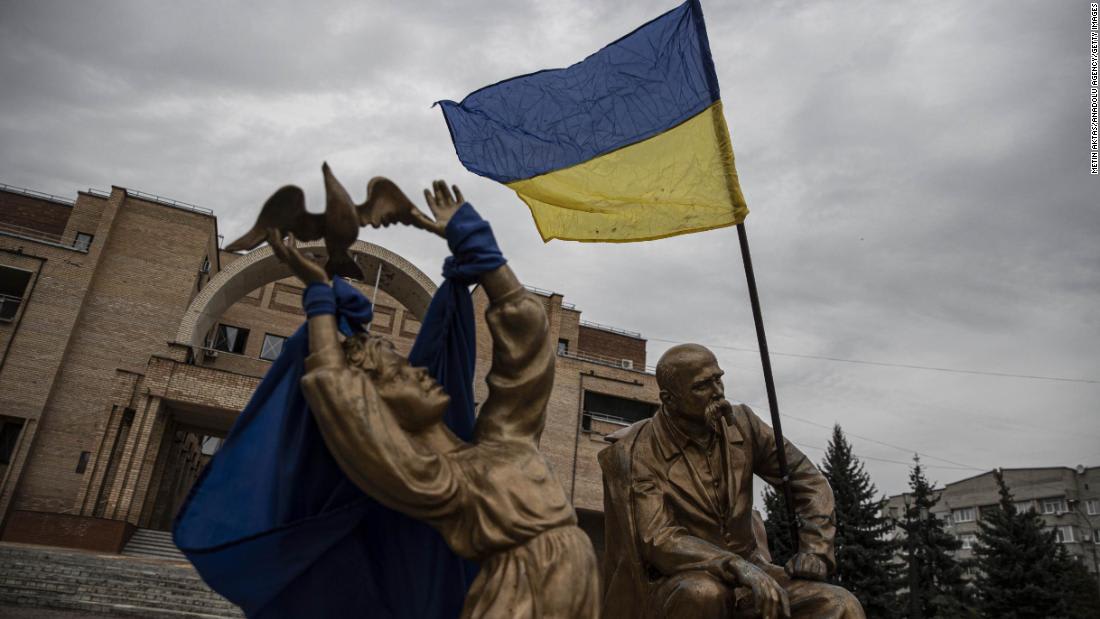The last week has seen a stunning transformation of the battlefield in eastern Ukraine, as a swift armored offensive by Ukrainian forces rolled through lines of Russian defenses and recaptured more than 3,000 square kilometers of territory.
That is more territory than Russian forces have captured in all their operations in Ukraine since April.
As much as the offensive was brilliantly conceived and executed, it also succeeded because of Russian inadequacies. Throughout swathes of the Kharkiv region, Russian units were poorly organized and equipped — and many offered little resistance.
Their failures, and their disorderly retreat to the east, has made the goal of President Vladimir Putin’s special military operation to take all of Luhansk and Donetsk regions considerably harder to attain.
Over the weekend, the Russian retreat continued from border areas that had been occupied since March. Villages within five kilometers of the border were raising the Ukrainian flag.
The collapse of Russian defenses has ignited recriminations among influential Russian military bloggers and personalities in Russian state media.
As the Ukrainian flag was raised in one community after another over the last several days, one question came into focus: how does the Kremlin respond?
A lightning operation
Ukrainian officials had telegraphed that an offensive was imminent — but not where it actually happened. There was plenty of noise about a counter-attack in the south, and even US officials talked about Ukrainian operations to “shape the battlefield” in Kherson. Russian reinforcements — perhaps as many as 10,000 — streamed into the region over a period of weeks.
There was indeed a Ukrainian assault in Kherson, but one whose intention appears to have been to fix Russian forces, while the real effort came hundreds of miles to the north. It was a disinformation operation the Russians might have been proud of.
Kateryna Stepanenko at the Institute for the Study of War, a Washington-based analytical group, says the deception worked.
“Ukrainian military officials reported that (Russian) Eastern Military District elements that had previously supported offensive operations towards Sloviansk had redeployed to the Southern Axis,” she told CNN.
Their replacements were clearly not up to the job — a mixed bag, Stepanenko said, of “Cossack volunteers, volunteer units, DNR/LNR militia units, and the Russian Rosgvardia (National Guard). Such forces were not sufficient to defend a vast and complex front line.”
The Ukrainians picked the weakest spot in Russian defenses for their initial thrust — an area controlled by the Luhansk militia with Russian National Guard units further back. They were no match for a highly mobile armored assault that quickly rendered artillery irrelevant.
Igor Strelkov, formerly the head of the Donetsk People’s Republic militia and now a caustic critic of Russian military shortcomings, noted the poor training of these units and “the exceptional caution of the actions of Russian aviation.” In short, Russian front-line units were hung out to dry without sufficient air support.
Multiple videos geolocated and analyzed by CNN, as well as local accounts, depict a chaotic withdrawal of Russian units, with large amounts of ammunition and hardware left behind.
The poor quality of Russian defenses along a critical north-south axis sustaining the Donetsk offensive is hard to fathom. Once underway, the intent of the Ukrainian offensive was crystal clear — to destroy that artery of resupply. Within three days, they had done so — not least because Russian reinforcements were slow to be mobilized.
Read more:
